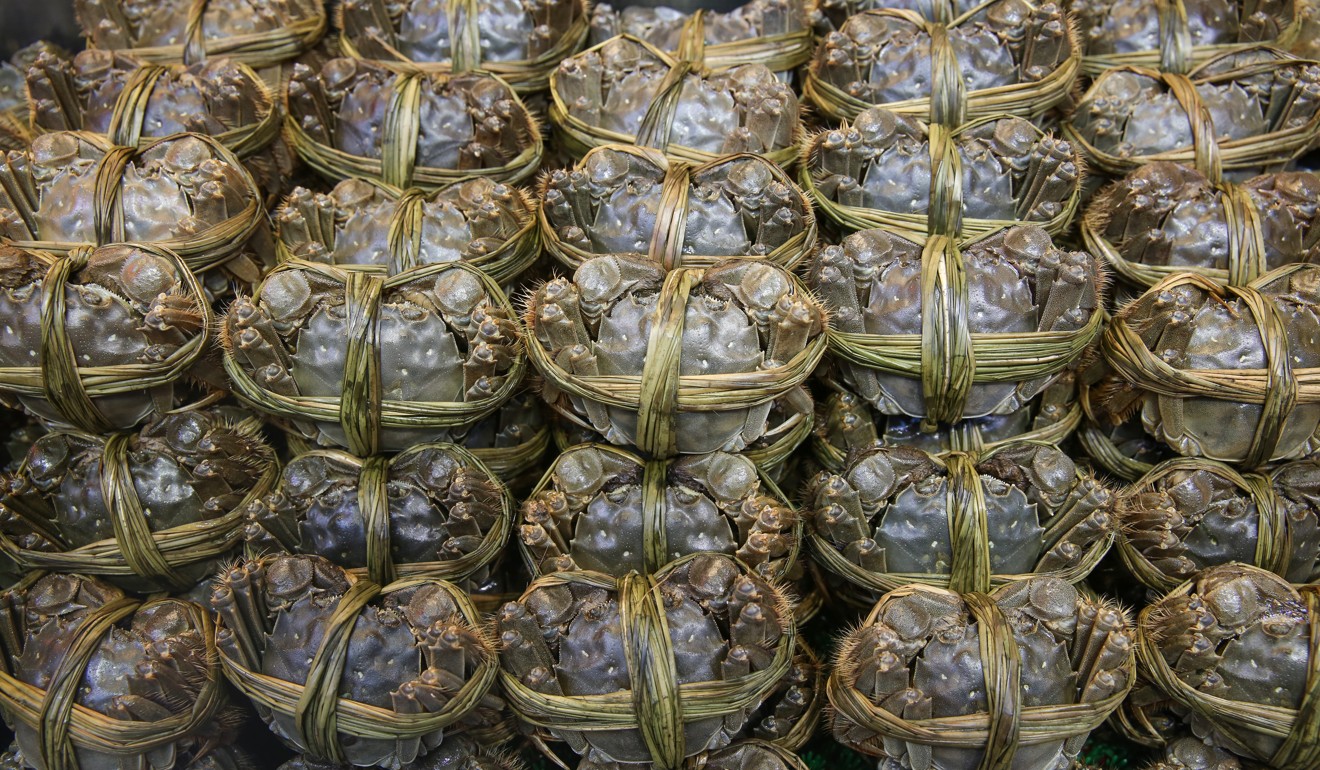
Hong Kong hairy crab sellers must obtain permit under new hygiene scheme, as peak season approaches
Requirements include obtaining health certificates for crustaceans and having fridge and sink in shop
With peak hairy crab season approaching, Hong Kong vendors selling the popular delicacy will now need a special permit from the city’s food safety authority to confirm they have met hygiene requirements such as having a fridge in the shop and a sink for handlers to wash their hands in.
Previously, these vendors did not need permission to hawk their wares. Under the new rules, those with physical premises must obtain a permit, while food stores selling other items will have to get official permission to add hairy crabs to their stock. The requirement for online operators, comprising a permit for selling restricted food, remains unchanged.
The Food and Environmental Hygiene Department announced the scheme on Monday and said applications were open. A source from the department said the aim was to allow better tracing of the distribution of hairy crabs.
In recent years, samples of hairy crabs imported from mainland China and Taiwan have been found to contain high levels of dioxin and dioxin-like chemicals, which have been linked to cancer.
Why was there a hairy crab ban in 2017?
Starting from September 3, operators selling hairy crabs should hold a permit or have written permission from the department. Under the scheme’s requirements, the crabs must come with health certificates acceptable to the authority. The crustaceans must also be kept in the fridge.
The department source said vendors in the past did not face strict requirements to obtain a permit for selling hairy crabs because of the nature of the business.
“Hairy crab is a seasonal food, and the health risk associated with its handling and storage is minimal,” the source said, adding that the city currently had more than 300 operators selling the crustaceans.

Steven Chu Kar-cheong, director of Wah Kee Wing Cheong Ho, a hairy crab retailer, welcomed the permit scheme as it provided better regulation of the industry.
“The biggest problem we face now is that everybody can sell hairy crabs, be it people selling shoes or ice cream,” he said.
Chu added that the hygiene requirements for the permit were reasonable, and his shop had already met them.
In general, September to November – before the winter mating season – is when the crabs produce the most roe.

